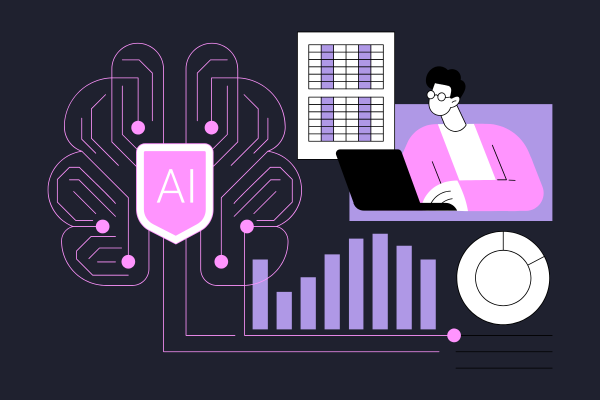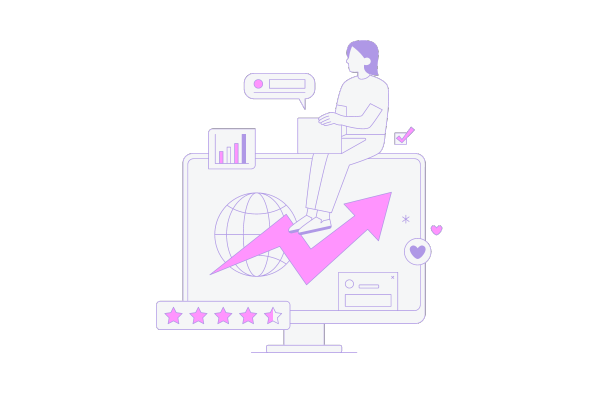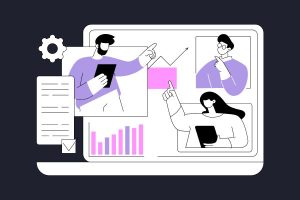Last Updated on November 26, 2025 by Becky Halls
Marketing attribution used to be simple but attribution in 2026… think again! Someone clicked an ad, landed on your site, and bought something. Easy!
But that world is gone. Today users bounce between TikTok, LinkedIn, Google, YouTube, ChatGPT, Perplexity, Reddit, and about five other touchpoints before they ever think of converting.
So when you look at your analytics dashboard and see “Direct” or “Organic Search” showing 80% of conversions… you know something’s off.
Attribution is broken, or at least, it’s blind in all the places that matter.
The question most marketers ask now isn’t “Where did my leads come from?” but “Why can’t my tracking tools see the full picture?”
And yes, that includes link building. Even your backlinks influence attribution, and most teams don’t even realise it.
Why Attribution In 2026 Is Getting Harder
Here’s what’s changed:
1. AI Assistants Break Traditional Attribution
When someone asks Gemini or ChatGPT a question, reads your brand name in the generated answer, then Googles your site later…
Analytics gives the credit to “Organic Search.”
But the real first touchpoint was the AI model.
This is happening constantly and no current analytics platform captures it.
2. Social Media Is the New Search Engine
People discover brands on TikTok, Instagram, YouTube and LinkedIn before they ever hit your website.
But unless someone clicks the link directly, none of those touches are tracked.
3. Privacy Restrictions Remove Data You Used to Rely On
iOS, cookie blocks, VPNs, tracking prevention… Your funnel has more holes than Swiss cheese!
4. Dark Social Is Bigger Than Ever
WhatsApp groups, Slack communities, DMs, Reddit threads, email forwards… These are massive drivers of conversions, yet your analytics says they’re “Direct.”
In our experience, up to 40% of conversions come from channels you can’t directly track. Most brands are flying blind.
“In 2025, an estimated 72% of consumer touchpoints happen outside traditional analytics tracking – across AI assistants, dark social, and social discovery.” – Search Engine Journal, Future of Search Report 2025
The Hidden Blind Spots in Attribution (That Most Marketers Ignore)
Let’s call them out because fixing attribution starts with knowing what’s missing.
Blind Spot 1: AI Mentions
AI assistants are already influencing billions of discovery moments.
If you’re not tracking how often AI references your brand, you miss a major part of your funnel.
Blind Spot 2: Backlink Influence
Backlinks don’t just help SEO. High-quality placements improve assisted conversions, especially when your brand appears on trusted sites.
But attribution platforms rarely give backlinks credit beyond “referral once.”
We’ve noticed that clients who increase topical backlinks through 3way.Social often see a lift in organic conversions before rankings move, meaning the link exposure itself influences attribution.
Blind Spot 3: Social Algorithms
Someone watches your content three times, never clicks, and Googles you later. Google gets the credit and social gets ignored. Humans behave completely differently than attribution models assume.
Blind Spot 4: Multi-Touch Journeys
A user might:
-
See you on TikTok
-
Hear about you on a podcast
-
Read your guest post
-
See a backlink on a blog
-
Search your brand name
-
Convert
Guess which step gets credit? Yep, the last one.
Attribution Models Aren’t Broken, They’re Just Outdated
Last-click, first-click, linear… they all oversimplify real journeys.
Modern behaviour requires modern models:
1. Contribution Modelling (2026’s Real Approach)
Instead of asking “Who gets credit?” you ask:
“Which touchpoints contributed meaningfully?”
It’s about weighting relevance, not assigning a single winner.
2. Time-Decay + Engagement Hybrid
Touchpoints closer to conversion matter more, but high-engagement content should get partial credit too.
3. AI-Assisted Attribution
LLMs can infer missing steps based on patterns.
Expect attribution platforms to start using AI to fill in the gaps that browsers and cookies can’t track.
What You Can Track
Here’s what the savviest marketers focus on instead:
1. Branded Search Growth
This is the strongest proxy for awareness.
If branded terms go up, attribution doesn’t matter as your marketing is working.
2. Backlink Lift
Quality backlinks increase:
-
brand visibility
-
assisted conversions
Even if analytics doesn’t show it clearly.
3. AI Visibility
Measure:
-
Are you included in lists or comparisons?
-
Are you cited in Perplexity answers?
This is the new attribution signal.
4. Multi-Channel Content Touches
Track views and impressions, not just clicks.
People convert after seeing you, not just clicking you.
5. Link-Driven Referral Patterns
Using 3way.Social, you can track which sites actually send visitors and which ones influence organic conversions indirectly.
How 3way.Social Helps Fix Attribution Blind Spots
3way.Social isn’t just a backlink marketplace, it’s an authority and visibility engine.
Here’s how it supports modern attribution:
1. Contextual Backlinks That Influence Multi-Touch Journeys
Relevant placements boost authority and awareness, even when you can’t track them directly.
2. AI-Ready Content Distribution
Links from well-structured sites help AI tools understand your brand and this leads to more citations.
3. Data-Driven Matching
Our AI suggests partner sites aligned with your niche and audience intent, boosting true attribution, not artificial metrics.
4. Organic Lift From Authority Building
More relevant backlinks = stronger topical authority = more AI mentions + more SEO impact.
We’ve seen clients gain more inbound leads within 30–60 days of improving their backlink profile – long before organic rankings moved. Attribution misses it, but growth doesn’t.
What Attribution Will Look Like in 2026
A few predictions:
AI Will Become an Attribution Layer
Models like GPT, Gemini and Claude will help reconstruct journeys your analytics can’t see.
Brand Authority Will Become the Primary Metric
Google and AI systems increasingly reward entities, not pages.
Relationship-Driven Links Will Beat Direct Response Ads
Because humans trust third-party recommendations more than ads.
LLMs Will Give Partial-Credit Attribution by Default
AI agents will start telling you which content influenced a user’s decision, even if they didn’t click it.
Cross-Platform Identity Tracking Will Go Mainstream
More tools will stitch user behaviour (privately and anonymously) across devices.
FAQ: Attribution in 2026
Does last-click attribution still matter?
It’s useful as one view, but no brand should rely on it as the truth. It hides 70% of the real journey.
Can backlinks improve attribution accuracy?
Not directly but they improve the inputs: authority, mentions, organic lift and brand discovery.
How do AI citations factor into attribution?
AI mentions often act as invisible first touches. Most analytics platforms can’t track them yet.
What’s the best attribution model for 2026?
Hybrid models that blend time-decay, engagement, and contribution weighting.
How do I measure hidden attribution channels?
Track branded search, referral lift, AI visibility, and multi-touch patterns.
✔ Marketing Attribution Blind Spot Checklist (2026 Edition)
Use this to audit your funnel and uncover the hidden signals traditional analytics can’t see.
1. AI Visibility Signals
Check if AI tools are mentioning your brand:
-
ChatGPT citations
-
Perplexity source mentions
-
Gemini / Google AI Overviews visibility
-
AI-generated lists or comparisons including your business
-
Brand answers appearing in RAG (retrieval) systems
If you’re invisible here, your attribution model is missing a major first-touch source.
2. Backlink Influence
Review how backlinks affect early-stage discovery:
-
Contextual backlinks on niche-relevant sites
-
Guest posts driving assisted conversions
-
Backlinks increasing branded search demand
-
Referral lifts from high-authority publications
-
3way.Social link exchanges influencing organic conversions
If backlinks grow but traffic doesn’t show in analytics, it’s still attribution success.
3. Social Discovery Signals
Audit the channels analytics can’t track properly:
-
TikTok views and saves
-
Instagram Reels discovery
-
LinkedIn impressions + post engagement
-
Community mentions (Slack, Discord, Reddit)
-
Podcast appearances or social shoutouts
These often lead to brand searches rather than clicks.
4. Dark Social Traffic Sources
Look for untracked but meaningful interactions:
-
DMs referring your content
-
WhatsApp/Telegram shares
-
Email forwards
-
Private Facebook/LinkedIn group mentions
-
Slack recommendations
If you see lots of “Direct” traffic, dark social is at play.
5. Brand Authority Signals
Track the long-term signals AI and search engines use:
-
Branded search volume rising
-
Consistent mentions on trusted niche sites
-
Regular expert contributions or quotes
-
Growth in entity recognition (Google Knowledge, LinkedIn, Wikidata)
-
Elevated trust indicators and topical authority
These often correlate more strongly with revenue than click-based attribution.
6. Multi-Touch Journey Mapping
Map behaviour across all touchpoints:
-
First seen on social
-
Later research via search
-
Read your blog or guest post
-
Interacted with a link from another site
-
Final conversion via direct or branded search
Your analytics only records the last step. This checklist reveals the rest.
7. Content Influence Tracking
Measure content impact beyond clicks:
-
High dwell time pages
-
Guides shared inside communities
-
Posts bookmarked or saved
-
Articles cited by other sites
-
Tutorials referenced by AI tools
These are attribution-positive behaviours even without direct tracking.
Our Final Thoughts
Attribution isn’t dying but is evolving.
The brands that will win in 2026 are those that:
-
stop obsessing over last-click
-
build authority everywhere people discover information
-
invest in backlinks that influence awareness
-
optimise for AI visibility, not just SEO
-
understand that influence > clicks
Because whether analytics can capture it or not, users are seeing you.
The question is: are you doing enough to make sure they remember you?






